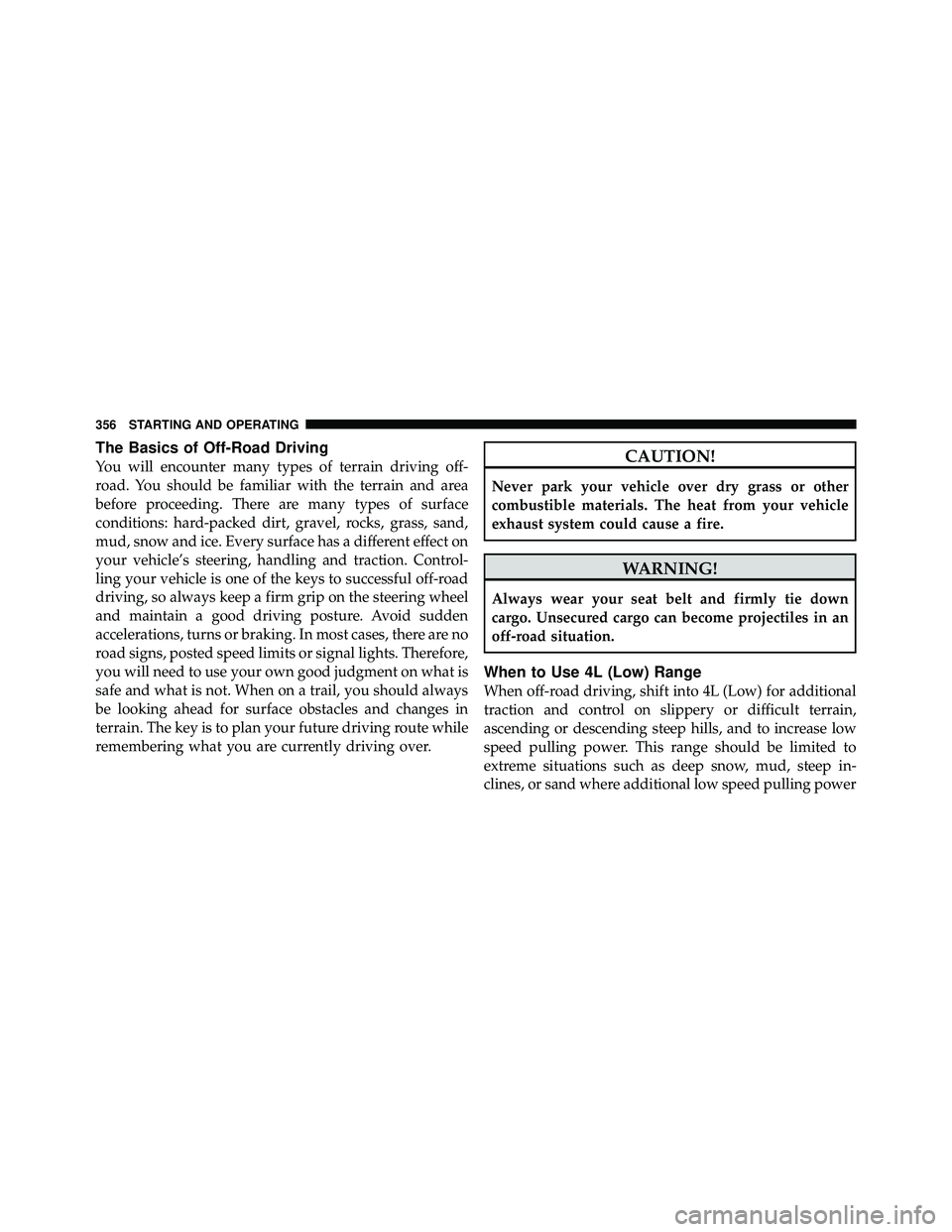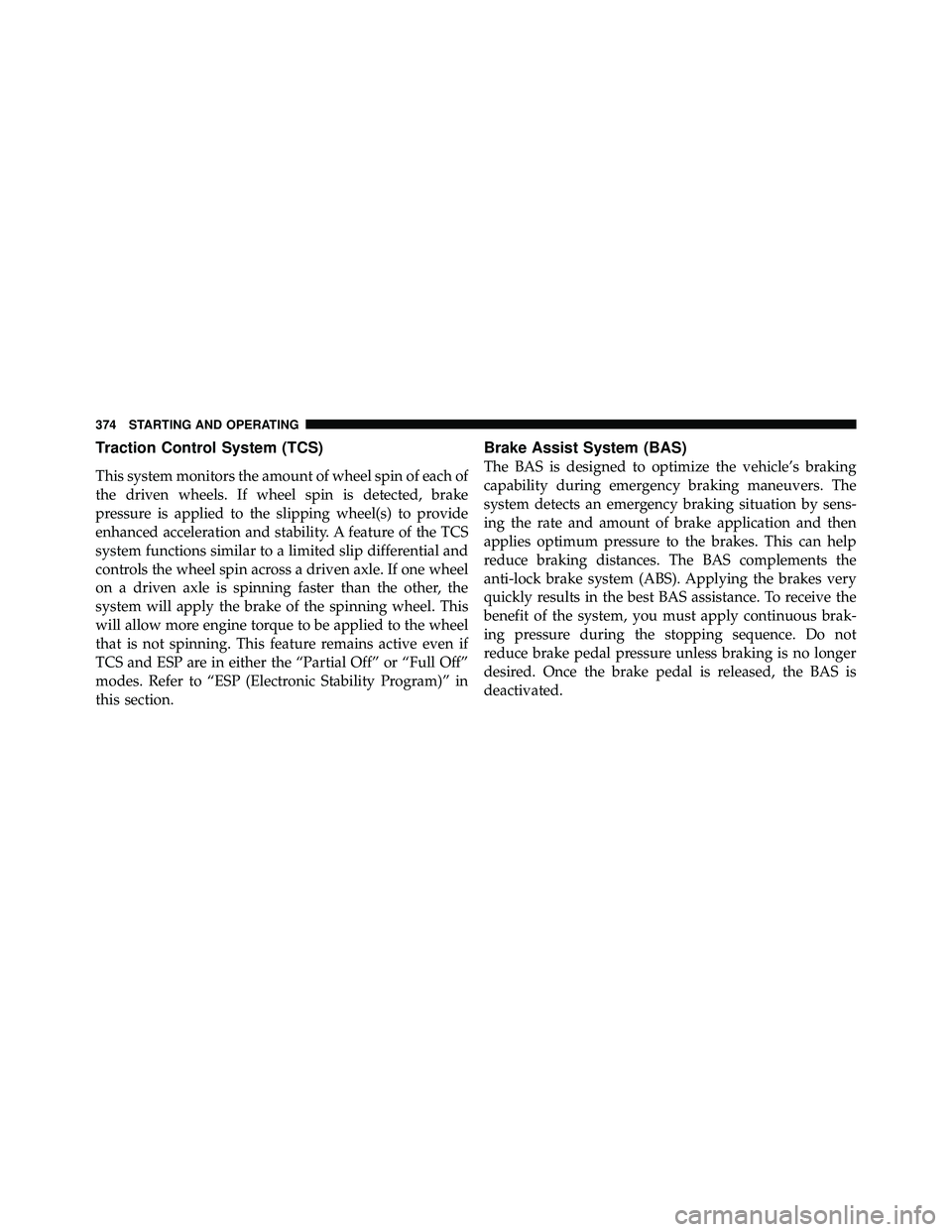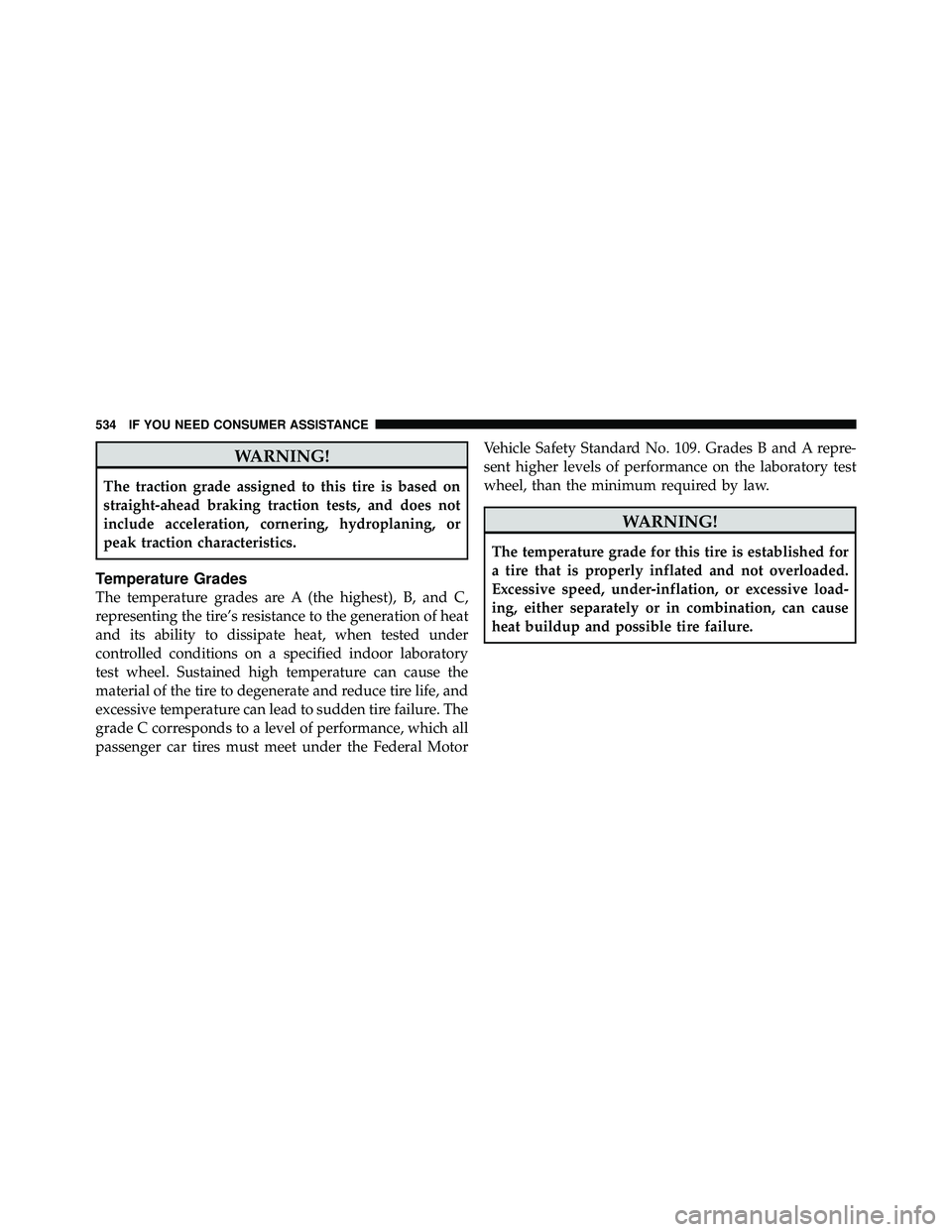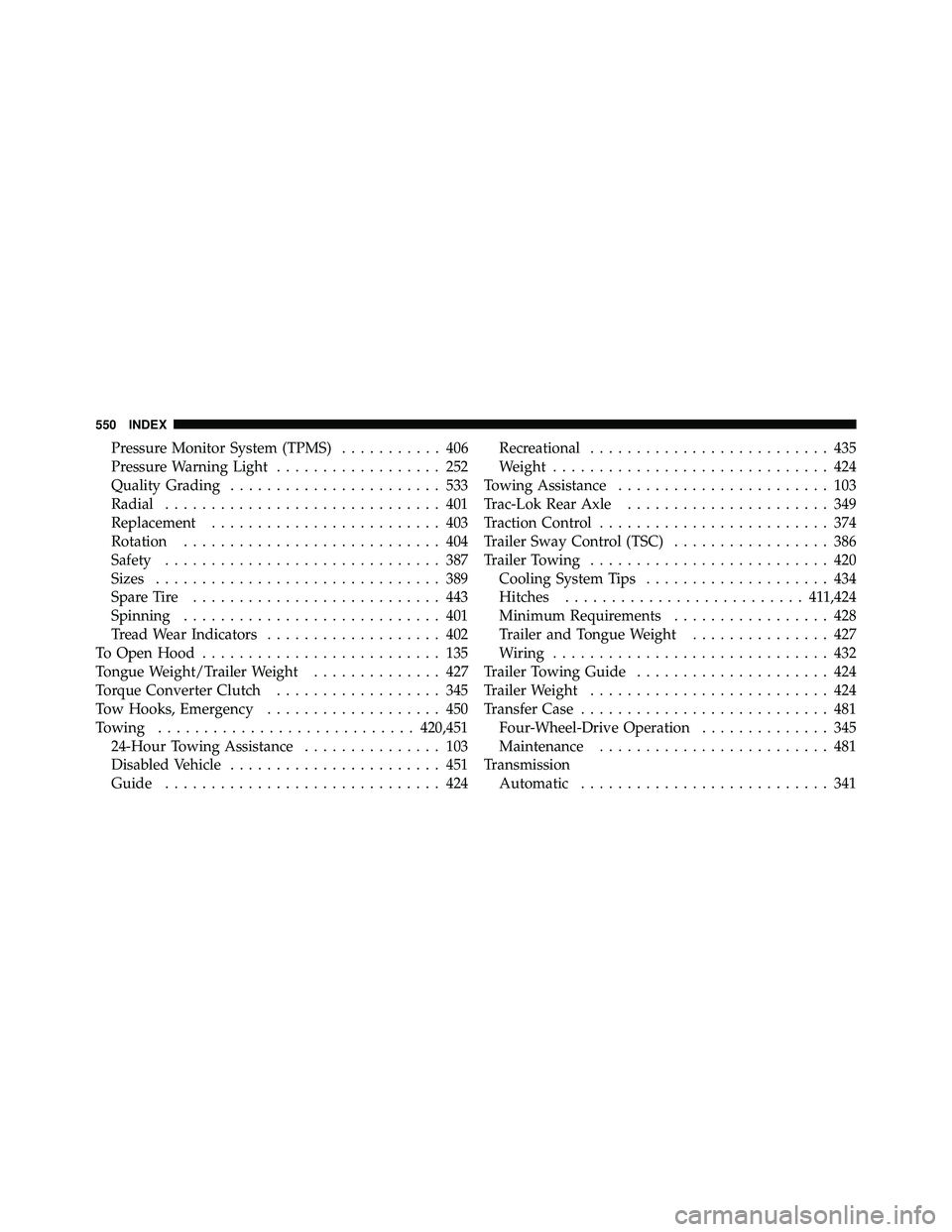traction control JEEP WRANGLER 2010 Owners Manual
[x] Cancel search | Manufacturer: JEEP, Model Year: 2010, Model line: WRANGLER, Model: JEEP WRANGLER 2010Pages: 554, PDF Size: 10.16 MB
Page 357 of 554

The Basics of Off-Road Driving
You will encounter many types of terrain driving off-
road. You should be familiar with the terrain and area
before proceeding. There are many types of surface
conditions: hard-packed dirt, gravel, rocks, grass, sand,
mud, snow and ice. Every surface has a different effect on
your vehicle’s steering, handling and traction. Control-
ling your vehicle is one of the keys to successful off-road
driving, so always keep a firm grip on the steering wheel
and maintain a good driving posture. Avoid sudden
accelerations, turns or braking. In most cases, there are no
road signs, posted speed limits or signal lights. Therefore,
you will need to use your own good judgment on what is
safe and what is not. When on a trail, you should always
be looking ahead for surface obstacles and changes in
terrain. The key is to plan your future driving route while
remembering what you are currently driving over.
Page 375 of 554

Traction Control System (TCS)
This system monitors the amount of wheel spin of each of
the driven wheels. If wheel spin is detected, brake
pressure is applied to the slipping wheel(s) to provide
enhanced acceleration and stability. A feature of the TCS
system functions similar to a limited slip differential and
controls the wheel spin across a driven axle. If one wheel
on a driven axle is spinning faster than the other, the
system will apply the brake of the spinning wheel. This
will allow more engine torque to be applied to the wheel
that is not spinning. This feature remains active even if
TCS and ESP are in either the “Partial Off” or “Full Off”
modes. Refer to “ESP (Electronic Stability Program)” in
this section.
Brake Assist System (BAS)
The BAS is designed to optimize the vehicle’s braking
capability during emergency braking maneuvers. The
system detects an emergency braking situation by sens-
ing the rate and amount of brake application and then
applies optimum pressure to the brakes. This can help
reduce braking distances. The BAS complements the
anti-lock brake system (ABS). Applying the brakes very
quickly results in the best BAS assistance. To receive the
benefit of the system, you must apply continuous brak-
ing pressure during the stopping sequence. Do not
reduce brake pedal pressure unless braking is no longer
desired. Once the brake pedal is released, the BAS is
deactivated.
374 STARTING AND OPERATING
Page 535 of 554

WARNING!
The traction grade assigned to this tire is based on
straight-ahead braking traction tests, and does not
include acceleration, cornering, hydroplaning, or
peak traction characteristics.
Temperature Grades
The temperature grades are A (the highest), B, and C,
representing the tire’s resistance to the generation of heat
and its ability to dissipate heat, when tested under
controlled conditions on a specified indoor laboratory
test wheel. Sustained high temperature can cause the
material of the tire to degenerate and reduce tire life, and
excessive temperature can lead to sudden tire failure. The
grade C corresponds to a level of performance, which all
passenger car tires must meet under the Federal MotorVehicle Safety Standard No. 109. Grades B and A repre-
sent higher levels of performance on the laboratory test
wheel, than the minimum required by law.
Page 551 of 554

Pressure Monitor System (TPMS)........... 406
Pressure Warning Light .................. 252
Quality Grading ....................... 533
Radial .............................. 401
Replacement ......................... 403
Rotation ............................ 404
Safety .............................. 387
Sizes ............................... 389
Spare Tire ........................... 443
Spinning ............................ 401
Tread Wear Indicators ................... 402
To Open Hood .......................... 135
Tongue Weight/Trailer Weight .............. 427
Torque Converter Clutch .................. 345
Tow Hooks, Emergency ................... 450
Towing ............................ 420,451
24-Hour Towing Assistance ............... 103
Disabled Vehicle ....................... 451
Guide .............................. 424 Recreational
.......................... 435
Weight .............................. 424
Towing Assistance ....................... 103
Trac-Lok Rear Axle ...................... 349
Traction Control ......................... 374
Trailer Sway Control (TSC) ................. 386
Trailer Towing .......................... 420
Cooling System Tips .................... 434
Hitches .......................... 41 1,424
Minimum Requirements ................. 428
Trailer and Tongue Weight ............... 427
Wiring .............................. 432
Trailer Towing Guide ..................... 424
Trailer Weight .......................... 424
Transfer Case ........................... 481
Four-Wheel-Drive Operation .............. 345
Maintenance ......................... 481
Transmission Automatic ........................... 341
550 INDEX